In celebration of Superior Spider-Man’s “Goblin Nation” arc, over the next two months, I’m going to acknowledge what I consider to be the 10 best Green Goblin/Spider-Man storylines. I’m creating this list based on a full array of arbitrary, unscientific criteria: namely historical significance, artwork, creativity and my overall enjoyment of the story. I’ll run at least one entry a week until we reach my number one choice.
Here’s #4:
4. “A Death in the Family” – Peter Parker Spider-Man (vol. 2) #44-47 (published August-October 2002): script by Paul Jenkins, pencils by Humberto Ramos and inks by Wayne Faucher
A case could certainly be made that 2002’s “A Death in the Family” arc should be categorized (and ranked accordingly) as an addendum/continuation of the No. 8 entry on my top 10 Green Goblin storyline list, “Revenge of the Green Goblin.” However, unlike the “Revenge” arc, which traverses multiple Spider-Man titles and creative teams, “Death” is an efficiently streamlined presentation of the Spider-Man/Green Goblin relationship as told through the lens of the Paul Jenkins/Humberto Ramos collaboration. As a result, it reads like an entirely different, self-contained story, despite the fact that it contextually springboards off “Revenge’s” ending.
What I find most interesting about “Death,” is despite its ominous title, it may be the quietest Green Goblin story on my list. It’s difficult to imagine a way for a creative team to make things even more personal between Peter Parker and Norman Osborn, but that’s precisely what Jenkins and Ramos do over the course of these four issues. This storyline just oozes with raw emotions, and yet, very few punches are ever thrown. Instead, we get a provocative examination of these two characters, and how they connect (and differentiate themselves).
Similar to “Revenge,” “Death” looks at the symbiotic relationship between Peter and Norman and points out the various ways the two characters rely on each other for motivation and meaning. But by having Jenkins as the sole literary voice on this story, “Death” manages to drill even deeper emotionally and psychologically. When the Green Goblin appears in front of Spider-Man in the arc’s very first issues (Peter Parker Spider-Man #44), even Spidey can’t resist rolling his eyes at Norman and wondering what he could possibly be looking to do now? These two have so much history, and have been through so much together, Peter’s attitude is practically baiting the reader to question, “yeah, what’s my hook for reading about crazy old Norman Osborn, again?”
In a neat little twist, Peter unmasks for Norman and asks him to do the same – thereby making it a conversation between Peter and Norman, not Spider-Man and Green Goblin – and the issue ends with the Goblin implying that there’s going to be a “funeral” in the near future in which Peter is invited.
And that’s when this story kicks into high gear and really ratchets up the emotional torment. Peter Parker #45 opens with a video Osborn released to the news media about the night Gwen Stacy died. During his narration, Norman talks about how he kidnapped Gwen due to a “business dispute” with Spider-Man, and that she was knocked off the Brooklyn Bridge accidentally during the confrontation. Goblin claims he tried to course correct on her glider, but Spider-Man instead makes the stupid mistake of using his webbing and snapping her neck.
The infamous neck “snap” (which the great Gerry Conway talks about in our recent podcast interview with him) is one of the great points of debate for Spider-Man fans. Was Gwen already dead when she was thrown off the bridge, or did Spider-Man actually provided the fatal blow to his beloved, innocent girlfriend when he used his webbing? Jenkins’s script manages to violently grab this debate by the throat and make both Peter and readers realize their worst fears about it. Not only is Norman traumatizing Peter by making him relive this horrible moment, but he is forcing him to accept his role in Gwen’s death. Sure, Peter could just dismiss Norman as a madman trying to make trouble, but because of that iconic “snap,” we all know that beneath his insanity, Osborn has hit upon some semblance of truth with this video.
Norman later ratchets up the drama some more. After Peter confronts Norman at a business meeting (and Osborn again, warns him about how evil of an SOB he can be), we get a scene with Flash Thompson, at this point a recovering alcoholic, being force fed a bottle of whiskey by Osborn. Flash is put behind the wheel of an Oscorp tanker truck, and the vehicle is driven into the side of Midtown High School where Peter was teaching at the time this story was published. Peter learns that Flash survived the crash, but is in a coma from which he may never wake up. That’s when Peter realizes that whatever Norman’s plan might be, he can no longer continue to ignore his arch rival until he goes away.
Just in case Peter didn’t get the message, Peter Parker #46 opens with Peter looking at a stack of pictures of his loved ones, which were delivered alongside a pumpkin as yet another not-so-subtle threat courtesy of Norman. This issue features one of the most funny (in a painfully awkward way) sequences of the entire arc, when Norman shows up at Midtown High (to pay for the damages of his rogue drunk employee, of course) and the school principal is left standing there with this goofy look on his face as Peter and Osborn stare holes into each other. Jenkins and Ramos keep building the tension one page at a time until we reach the inevitable confrontation between Spider-Man and the Green Goblin. Of course, Norman throws one more wrench at Peter, when he mentions being the “Goblin Heir” again, and then dismisses his own grandson, Normie, as being the next “innocent” on his chopping block. Peter coldly responds “I’ll kill you” in a wonderful splash page from Ramos that really drives home just how much Norman’s insane mind games are dragging Peter down to a place of hatred.
And that’s where this story goes in a different direction. Sure, there are punches thrown in “Death’s” final chapter, but the tension the fight creates is purely secondary to all of the words and putdowns being thrown around. I’ve seen some criticize this storyline for being a bit too meandering because Norman’s endgame is not well-defined, but it’s crystal clear to me. At the end of “Revenge,” Norman rides off and proclaims that at some point, either Norman is going to kill Peter or vice versa. There would not be a middle ground or any compromises on the matter. And while Spider-Man was able to brush that aside at the time – because if Peter didn’t kill Norman at the end of Amazing Spider-Man #122, then what could the Goblin possibly do to push him to the point of murder – the final chapter of “Death” lays Osborn’s master plan out on a silver platter: he wants Peter to not only feel hate, and to admit to it. Norman is so convinced that he and Peter are cut from the same cloth that he will stop at nothing to make Spider-Man realize that there’s no escaping how the two are linked to each other.
And in what might end up being Peter’s great emotional triumph ever, he refuses to give in to hate. Norman threatens Normie, Aunt May, Mary Jane … everyone Peter knows. He keeps insisting that Peter not only should kill him, but NEEDS to kill him. And Peter brushes it aside. After beating each other to a pulp, Peter and Norman take a breather, where the Goblin cracks a joke about how he debating calling himself “Mister Coffee” before cooler heads prevailed in his one-man marketing department. Peter – who has been struggling throughout this arc talking about a dream he had – tells Norman about how he sees MJ’s plane go down and as he’s sorting through the wreckage, he instead finds Gwen.
It’s such an oddly poignant moment in this story. It’s a tragic dream in its own right, but it’s made even more painful by the fact that Peter realizes that Norman is the only person with which he can share something so dark. While this scene certainly doesn’t establish a budding friendship between the two, it’s yet another demonstration courtesy of Jenkins of how Norman and Peter are tethered to each other, whether they like it or not. And only after that realization can Peter walk away, but not before he delivers a putdown to Norman that is straight out of Bob Dylan’s “Positively 4th Street” – “I won’t have to kill you in return. I won’t even have to send you to jail. Just being you … that’s life without parole.”
It’s odd to say this about a moment of utter resignation from Peter, but “Death” may mark Peter’s greatest victory against the Green Goblin. Peter accepts that his own principles and morals trump the potential consequences of any threat from Norman and then chooses to walk away. We’ve seen Peter lift tons of steel over his body, defeat the unstoppable Juggernaut, and take down a mystical demon named Morlun, but we’ve rarely seen Spider-Man humble an opponent so thoroughly without lifting a finger as he does to Norman in “Death.”
Just to give Peter’s victory some more gravitas, as a code to this storyline, Jenkins and Ramos call back to an earlier line from the arc. As Norman and Peter play their cat and mouse game, Norman bets Peter “five bucks and a pizza” that he can get him to compromise on his principles. Waiting for Norman at his Oscorp office the next day is a note from Peter, along with a $5 bill and a pizza.
This leads to one of the most ambiguous endings to a Spider-Man story I can think of. A distressed-looking Norman, his face buried in his hands, with a revolver on his desk. It begs the question – is Norman so defeated that he’s debating ending his own life? That obviously didn’t come to fruition, but I have to think that’s what Jenkins and Ramos were indicating in this scene. How would the landscape of the Marvel Universe have changed in the 2000s if Jenkins and Ramos didn’t leave things so inconclusively in that scene?
In my “Night of the Goblin” write-up, I mentioned that the comic launched what I like to call the second “phase” of the Spider-Man/Norman Osborn story. While Norman and Peter have crossed paths a few more times since “Death in the Family,” there’s a certain finality to this storyline in the way Jenkins and Ramos have crafted it. It’s unquestionably the best Goblin/Spider-Man story of the 2000s (so, spoiler alert, I guess, for the rest of my list – don’t expect anything from the 2000s) and while I certainly enjoyed “New Ways to Die” and a few other Osborn/Spider-Man confrontations that came after, I honestly wouldn’t have been mad if Jenkins and Ramos gave us one more page at Oscorp depicting Norman dead on the floor of his office, with a smoking gun lying next to him. Despite the visual inconclusiveness of the story, “Death” still finishes like the book has been closed on Peter and Norman.
Check in Wednesday for the next entry in my “Top 10 Green Goblin Storylines” list.

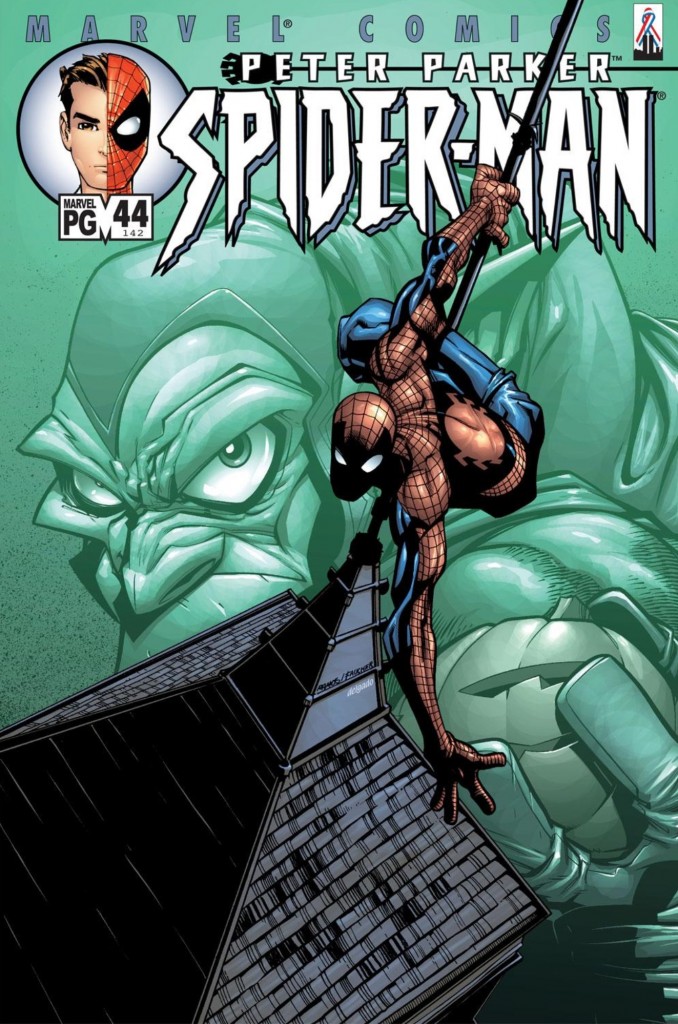
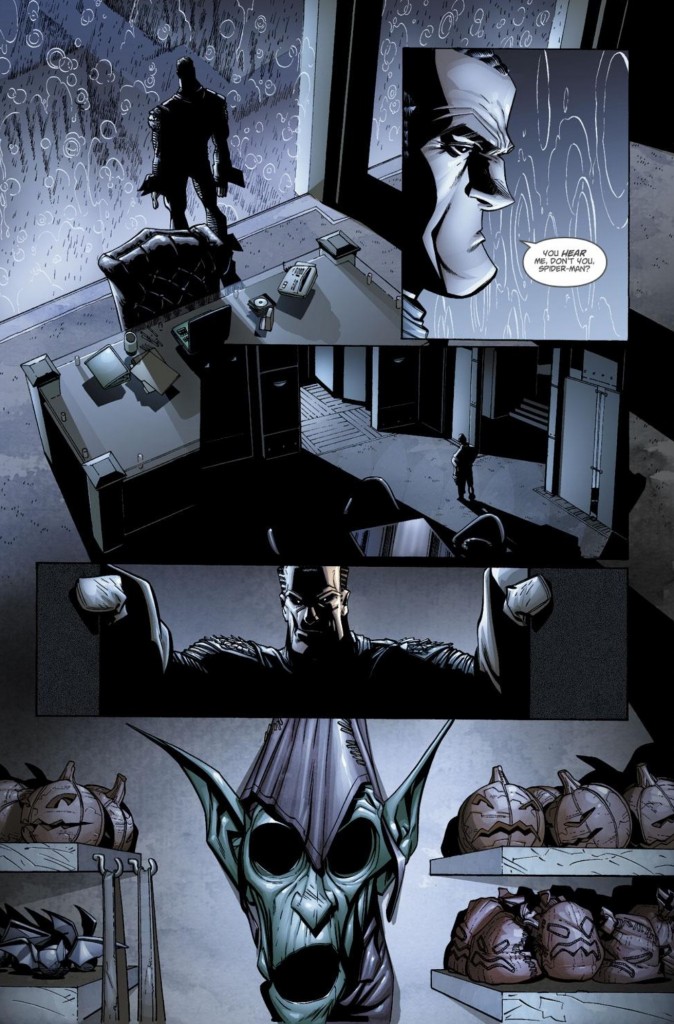
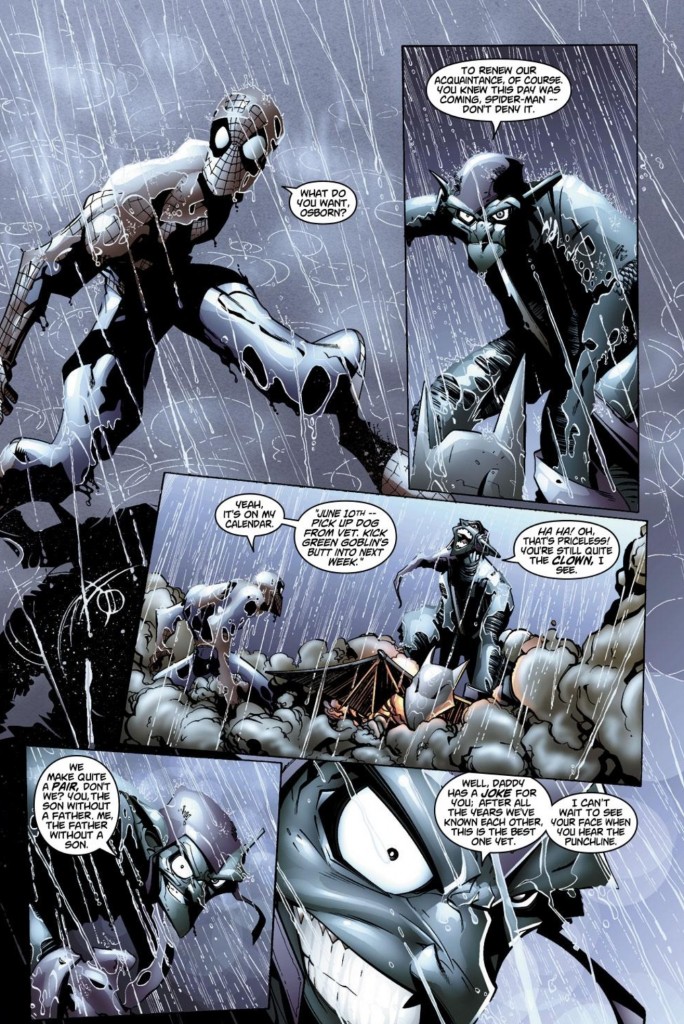
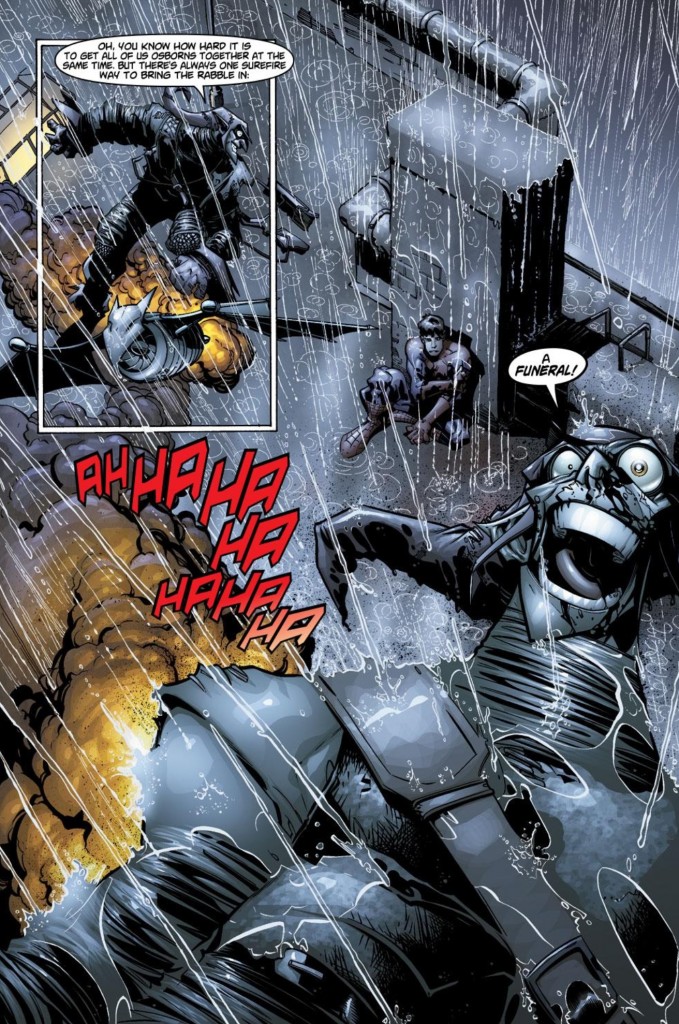
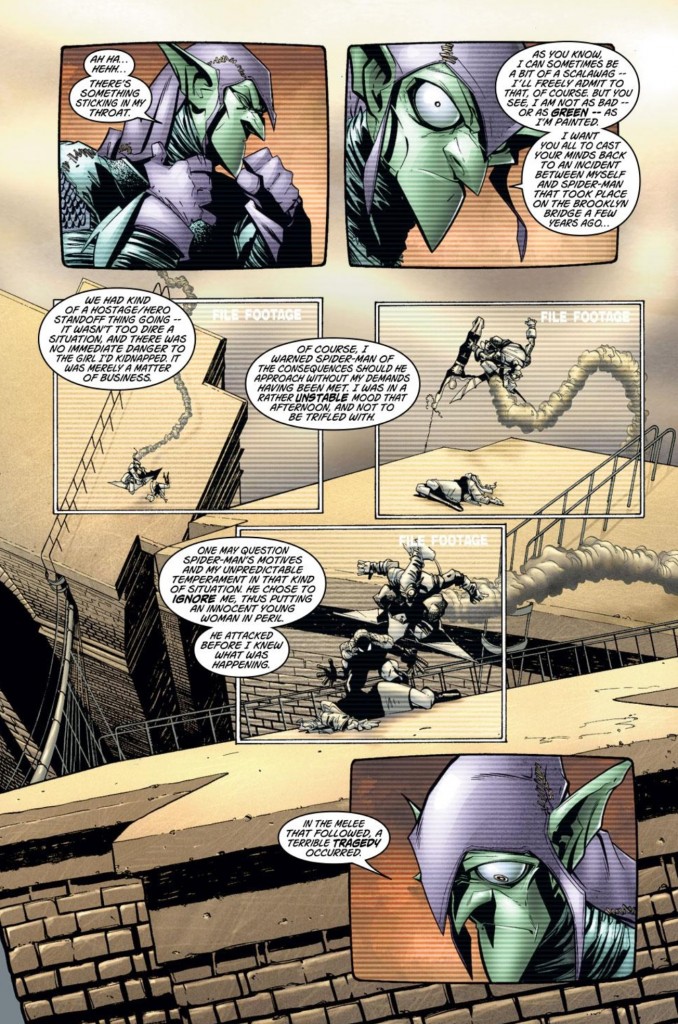
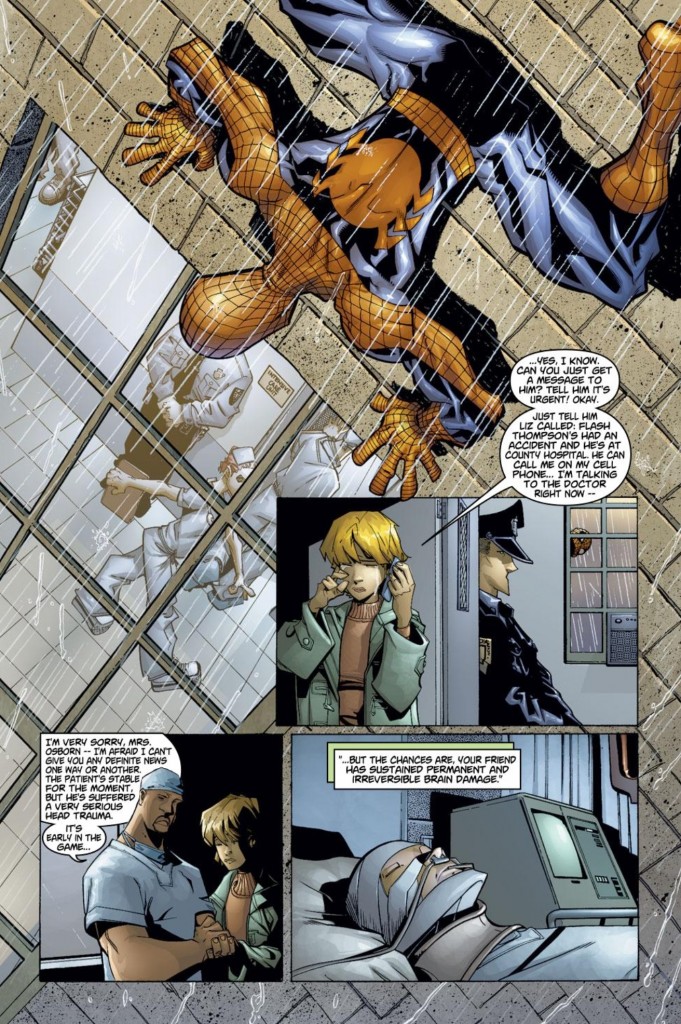
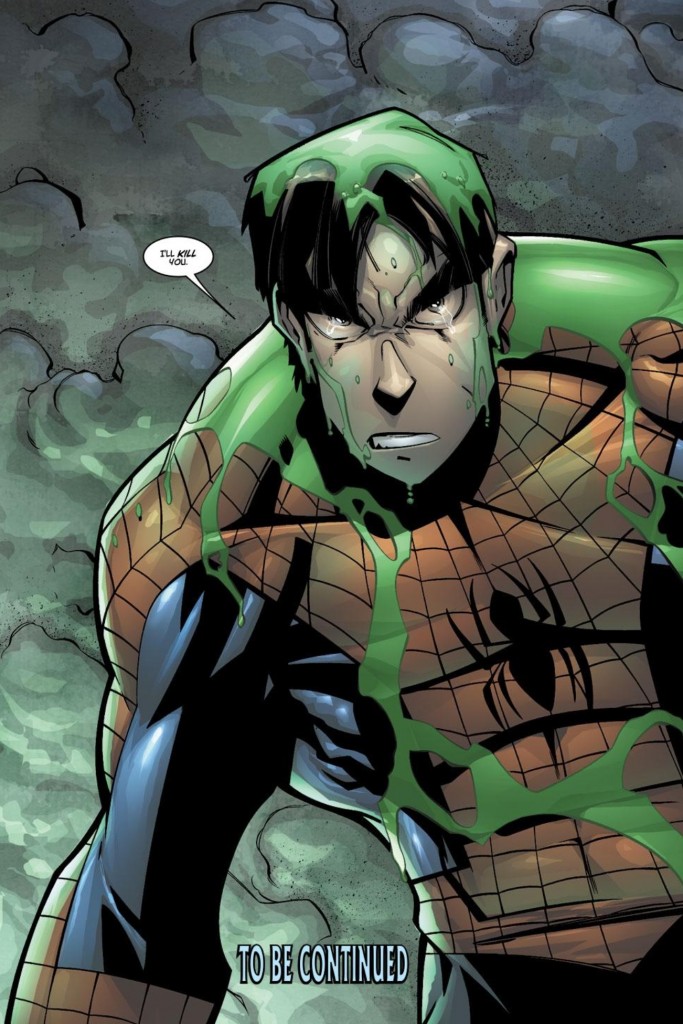
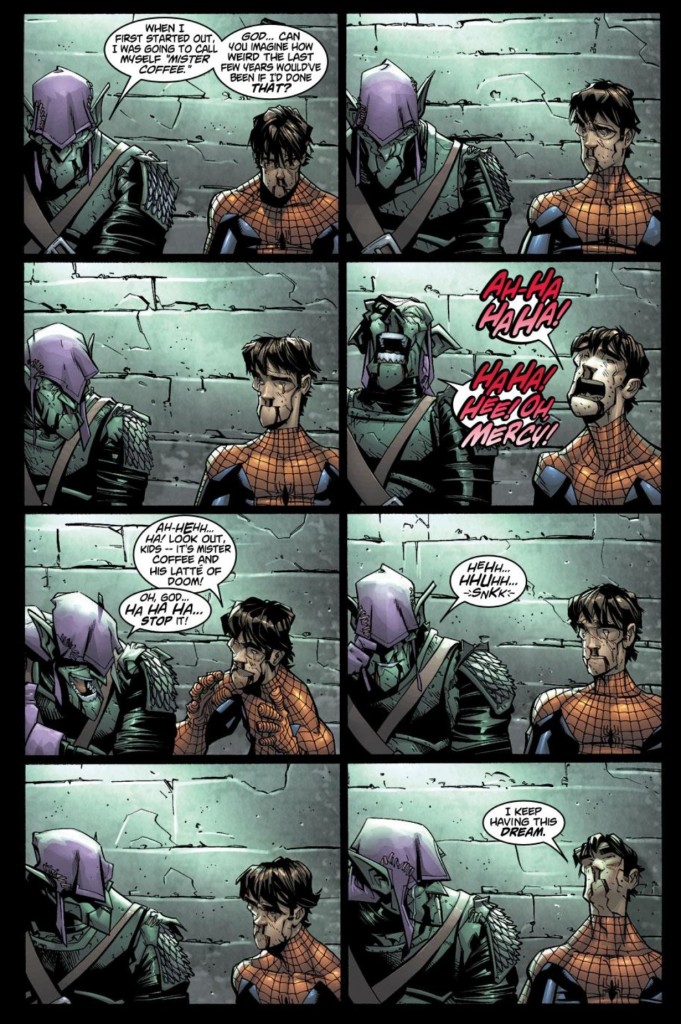
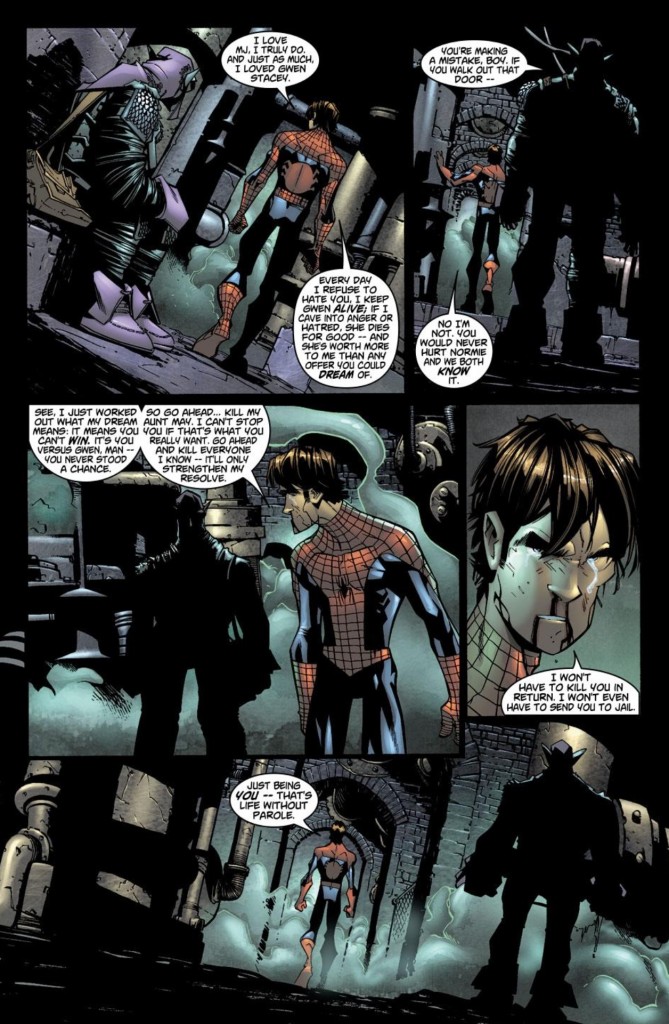
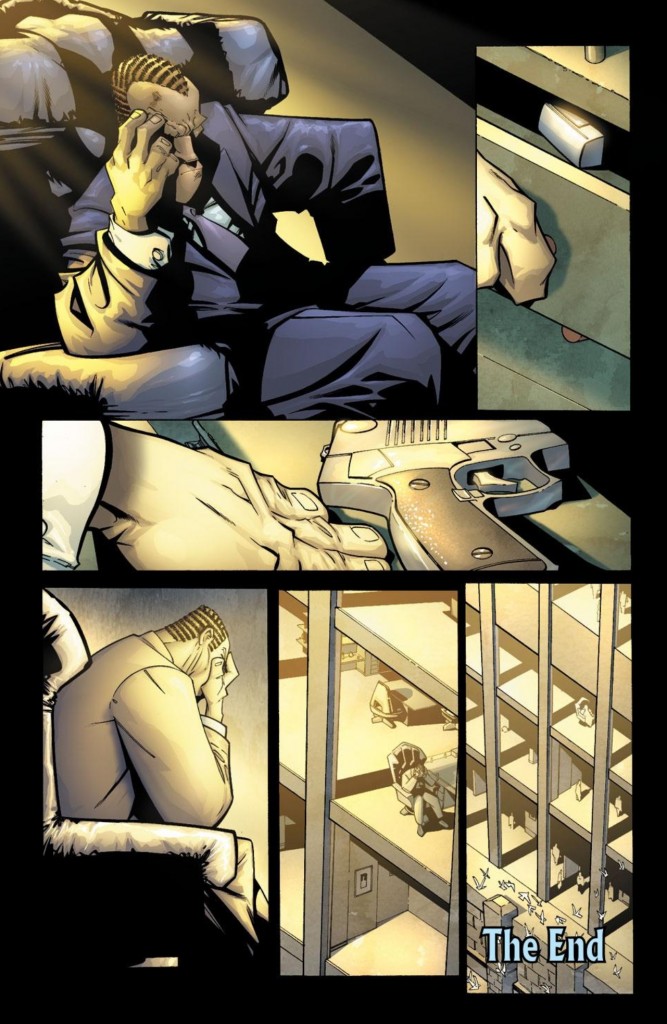

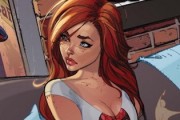
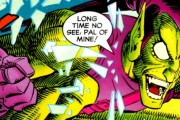
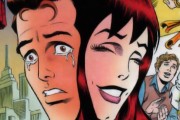
I can’t get pass the art in the comic. This is a period where Ramos still had a shakier grasp on his anatomy, so the characters are very silly looking. It was also when Ramos still couldn’t draw a dynamic action scene, which makes Spider-Man and the Goblin look awkwardly posed. I wonder how much more impact this story would have had if there was different artist.
See I thought the point of the whole thing was that Norman was trying to get Peter to kill him because he hated himself. If he antagonized Peter enough, it’d be like suicide by cop. He tells Peter to do it and that’s when Peter stops because he realizes that was the plan too. That’s what the line “being you is life without parole” means. Norman hates himself and wants to die but is too cowardly to do it himself. When his plan hasn’t worked that’s why he’s looking at the gun.
Holy crap the art. It looks like Peter’s and Goblins’ torsos end at what should be half way down their legs. It sorta ruins the whole thing when the main characters look like apes. Great wrighting in this story though.